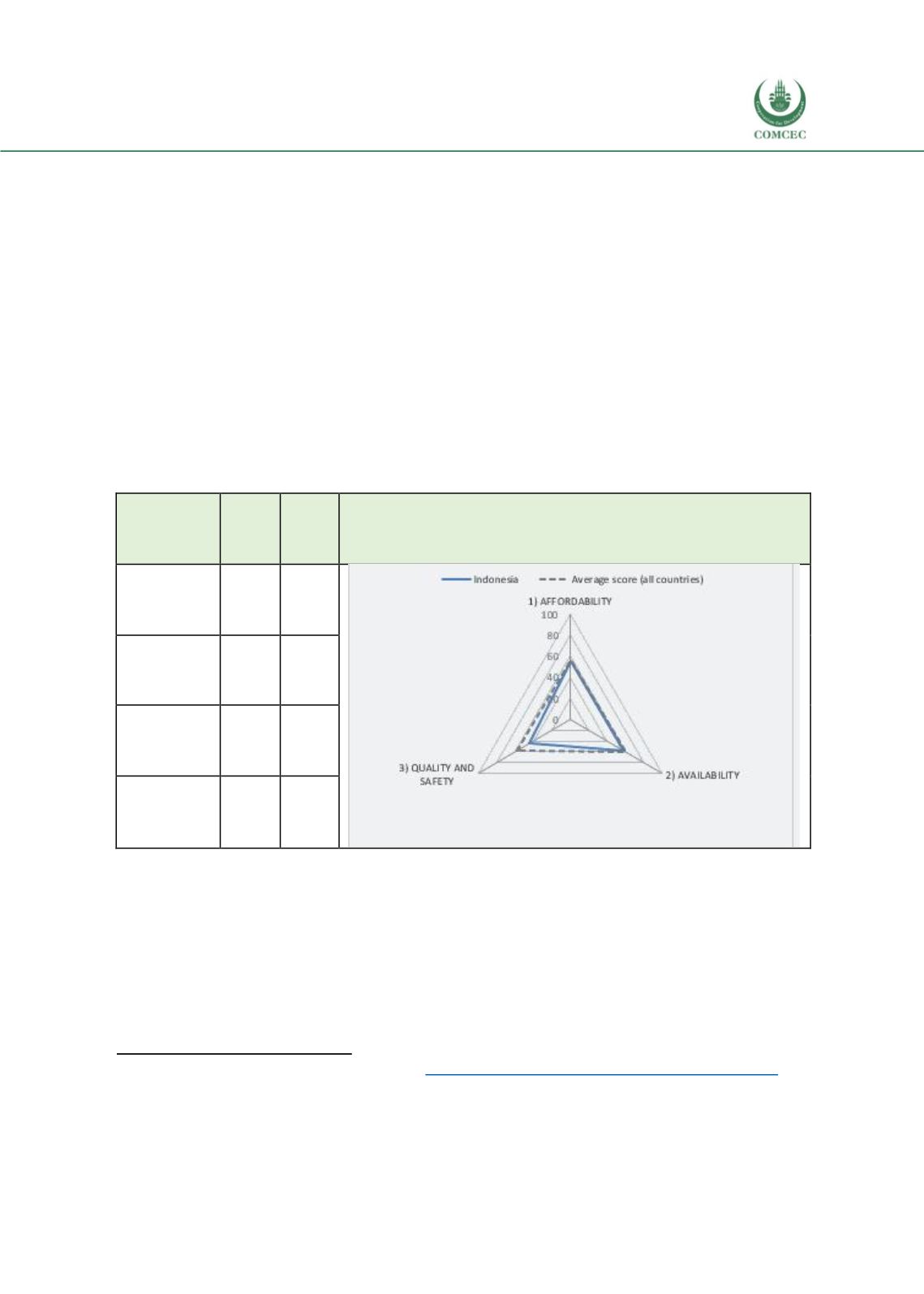

Increasing the Resilience of the Food Systems
In Islamic States in Face of Future Food Crises
95
4.3.2.
Indonesia
Background
Indonesia has an established agriculture industry and several strengths , as recognized by the
Global Food Security Index (EIU). However, despite food system stability, the country has
weaknesses that need to be considered, including very low R&D expenditure in agriculture, low
per-capita income, low protein quality, and low diversification of food, with production heavily
concentrated on rice.
394
Overview of Robust Food Security in Indonesia
Indonesia is ranked 65
th
out of 113 countries in food security, according to the EIUFood Security
index. Indonesia's performance can be seen in the following figure, with the country's core
strengths resting on quality and safety.
395
Figure 24: Indonesia Food Security Performance
Metric
Global
rank
Global
score
Score visualization
Availability
58
58.2
Access
and
Affordability
63
55.2
Quality and
Safety
84
44.5
Overall
65
54.8
Source: EIU Food Security Index
Assessing Food Security Pillars in Indonesia
Indonesia has a well-established agriculture system. Food crop production comprised 3.43% of
GDP in 2018, while horticulture and plantations contributed 1.51% and 3.08%, respectively.
Meanwhile, the food and beverage processing industry contributes 5.97%.
396
Although
agricultural products comprise a relatively small contribution to GDP, the agricultural, forestry,
394
“Global Food Security Index – Indonesia.” Oct 201
8. https://foodsecurityindex.eiu.com/Country/Details#Indonesia39
5 Ibid.396
“Quarterly Distribution of GDP at CurrentMarket Prices By Industrial Origin (Percent), 2014-2019.” Statistics Indonesia.
https://www.bps.go.id/dynamictable/2015/05/06/828/-seri-2010-distribusi-pdb-triwulanan-atas-dasar-harga-berlaku-menurut-lapangan-usaha-persen-2014-2019.htm
















